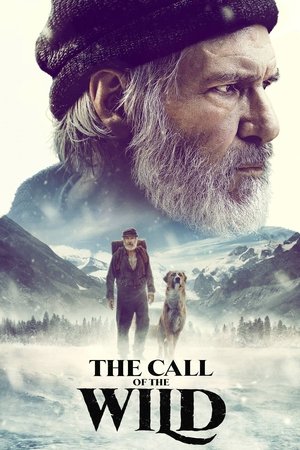The Call of The Wild: A Journey of Growth and Resilience
The concept of home can be quite elusive and difficult to define. Is it simply the place we come from, or could it be something deeper, a feeling that resides within us? This thought-provoking question lies at the heart of Jack London’s masterpiece, The Call of The Wild. Adapted to the screen by director Chris Sanders, this film takes the audience on a highly emotional adventure that explores themes of loyalty, courage, and resilience, all while imparting a powerful lesson in humanity. Buck, a remarkable and strong-willed dog, serves as the protagonist in this mesmerizing tale, straddling the line between different homes and discovering the essence of belonging on his transformative journey.
A Journey of Loss and Adaptation
Buck, a cross between a St. Bernard and a sheepdog, starts his journey as an affectionate and endearingly clumsy house pet in a Californian town. His days are filled with playful photobombing, rabbit chasing, and the joy of being loved by his family and the locals. However, Buck’s idyllic life takes a drastic turn when he is forcefully abducted from his home and transported to the harsh and unfamiliar setting of the Canadian Yukon during the Gold Rush of the 1890s. Suddenly, he finds himself alone and mistreated in an unforgiving environment.
Life as a sledge dog brings both challenges and moments of connection for Buck. He forges new relationships with humans, such as the kind-hearted French Canadian mailman Perrault and his wife Franquoise. Additionally, Buck must navigate his interactions with his fellow sled dogs as they work together as a team. This journey of adaptation, growth, and self-discovery propels Buck further away from familiarity and closer to finding his true place in the world.
Two Survivors Seeking Peace
Buck isn’t the only character marked by tragedy and searching for solace. John Thornton, played by the talented Harrison Ford, is a grieving father who has given up on life after the loss of his son. Both Buck and Thornton share a common thread — they are survivors trying to find their footing in a world that has shattered their dreams. Despite their own struggles, they find themselves learning valuable lessons about resilience, letting go of the past, and embracing the present.
While Thornton’s story is deeply human, it is Buck, the least human character, who delivers the most profound message of the film a lesson in humanity. The Call of The Wild is an emotionally challenging movie that not only showcases heartwarming moments of Buck’s adorable antics but also confronts viewers with violence and loss. The film embraces the bittersweet nature of life and encourages us to believe in the power of companionship and courage.
A Story of Growth, Discovery, and Self-Acceptance
Above all, The Call of The Wild is a tale of growth, discovery, and self-acceptance. Buck’s journey teaches us the importance of being a team player and leader while staying true to ourselves, even in the face of adversity. It exemplifies loyalty, strength, and resilience, reminding us that we have the capacity to endure and thrive, no matter the hardships we face. The movie inspires us to find the beauty in companionship, regardless of its form, and to carry our past experiences with us as we navigate the present.
While The Call of The Wild captivates viewers with its emotional depth, there are areas where it could have performed better. The character of American gold seeker Hal, portrayed by Dan Stevens, lacks the necessary depth to become a truly compelling villain. However, the film’s focus on resilience and humanity outweighs this minor flaw. It successfully delivers its message through breathtaking cinematography, an exceptional score, and impressive CGI effects, capturing the raw essence of life’s journey.
Conclusion
The Call of The Wild is a cinematic experience that transcends the boundaries between humans and animals. It evokes a wide range of emotions, grappling with themes of loss, adaptability, and the power of connections. Through Buck’s extraordinary journey, the film imparts essential life lessons about resilience, courage, and the pursuit of one’s true place in the world. By embracing the beauty of companionship and acknowledging our past experiences, we can find solace and embrace the present moment.
Frequently Asked Questions
1. Is The Call of The Wild based on a true story?
No, The Call of The Wild is a work of fiction written by Jack London. While the story itself is not based on true events, it explores universal themes of resilience and the human-animal bond.
2. How does The Call of The Wild portray the concept of home?
The Call of The Wild challenges conventional notions of home by emphasizing the importance of personal connections and inner feelings. Home is not limited to a physical location; it can be found through the relationships we cultivate and the memories we hold dear.
3. Who is the target audience for The Call of The Wild?
The film is suitable for audiences with a high school education or above, as it explores complex themes and emotions. Its universal messages of courage and resilience can resonate with viewers of all ages.
4. Is The Call of The Wild appropriate for young children?
Parents should exercise caution when considering The Call of The Wild for young children due to its intense scenes and depictions of violence. It may be more suitable for older children and teenagers.
5. How does The Call of The Wild compare to Jack London’s novel?
While the film adaptation captures the essence of Jack London’s novel, some narrative changes and condensed plotlines are necessary to present the story on the big screen. Fans of the book will appreciate the film’s visual portrayal of Buck’s journey.


